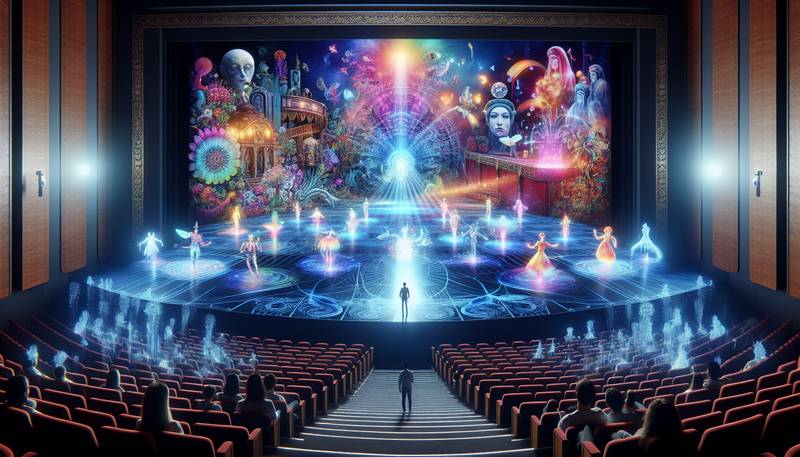Augmented Reality in Theatre Design: Immersive Stage Experiences

Setting the SceneThey say the stage is a place where magic happens, and in today’s world, that magic is powered by technology. Forget about wooden platforms and painted backdrops; now, theatre is stepping onto the digital stage. With augmented reality (AR) making its grand entrance, the world of theatre design has been transformed from a simple two-dimensional world into a vibrant, interactive experience that would make even Shakespeare raise an eyebrow.For the uninitiated, augmented reality is like the overenthusiastic friend who constantly wants to add more to the conversation. It takes the real world and overlays it with digital information, creating a blended experience that can either dazzle or confuse. Imagine watching a play where the walls seem to breathe, characters can appear from thin air, or scenery morphs with the plot. This isn't just a theatre production; it's an experience that can leave you questioning your sanity—or realizing you always knew you were a bit off-kilter.The Role of Augmented Reality in TheatreAR is revolutionizing how we perceive stagecraft. It allows designers to create stunning visuals that were once confined to the dreams of tech-savvy directors and ambitious artists. Instead of relying solely on physical sets, theatre designers can now incorporate virtual elements that amplify storytelling, enhance moods, and transport audiences into worlds beyond their imagination.Some might say AR is like the Swiss Army knife of theatre design—versatile, multi-functional, and occasionally, a bit perplexing. Here are some ways it’s shaping the landscape: - Dynamic Set Changes: Imagine a scene where a serene forest suddenly morphs into a roaring sea. With AR, set changes can happen in real-time, dazzling audiences as they watch the drama unfold without the cumbersome limelight of stagehands fumbling in the dark.
- Interactive Experiences: Audiences can engage with the performance through their devices, becoming part of the story. Want to know how the villain feels about his life choices? Just point your phone and voilà! A digital monologue appears.
- Enhanced Visual Effects: Think of the possibilities! From swirling galaxies to the depths of the ocean, AR brings visuals to life that would make even the most seasoned production crew green with envy.
Tech Meets TraditionPioneering theatre companies have already started to embrace this evolution, merging age-old traditions with cutting-edge technology. While it's easy to argue that nothing beats the smell of fresh paint on a canvas or the rustle of a script, one can’t deny that the visual acuity afforded by AR could make even a modern-day Aristotle nod in approval.However, the integration of technology isn’t always a smooth sailing—or should we say, a smooth act? For every glamorous projection that leaves audiences in awe, there can be an unfortunate mishap, like a digital dragon appearing when it was meant to be a gentle deer. Imagine the discomfort of an audience member who was expecting a heartwarming nature scene only to be confronted by a virtual beast breathing fire. Talk about a plot twist!The Future is InteractiveAs AR becomes increasingly prevalent in theatre design, it beckons the question: what does the future hold? Will we be seeing audiences wearing VR headsets while they watch a Shakespearean play? “To be or not to be” might very well become “To be or to wear a headset.” The potential for audience participation is through the roof. Imagine being able to influence the characters’ decisions with a mere swipe of your finger.The digital age is upon us, and theatre is riding the wave like a seasoned surfer—some might wipe out, but others will catch the perfect break. Designers and directors are in a race to see who can push the boundaries further, and the result is a cornucopia of creativity, a mashup that would make even Picasso envious.When the Curtain FallsWith augmented reality’s poetic dance alongside traditional theatre, it’s clear that we are on the verge of something extraordinary—an evolution that celebrates creativity while embracing technology. As the curtain falls on one era, it rises on another, promising audiences experiences that are richer, more vibrant, and occasionally, quite entertaining. In the end, while the stage may still have its wooden support beams, it’s now supported by an immeasurable expanse of possibilities. So, gear up and prepare for a new act where the only limit is your imagination—or, perhaps, the ability to avoid stepping on digital dragons.
|
|







